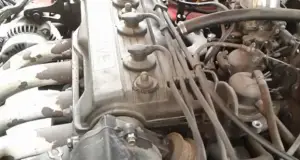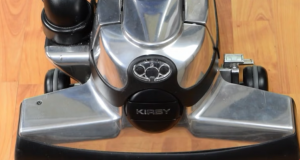What comes to mind when you think about classic summer foods? We’re willing to guess that corn on the cob was one of the summer dishes you considered! The only drawback to this wonderful summer side is that it is not available as fresh at other times of the year.
That is why it is critical to understand the best methods for keeping corn on the cob as healthy as possible. This involves determining whether or not you can vacuum seal corn on the cob and, if so, how to do it. We researched everything there is to know about vacuum-sealing corn on the cob in order to make it easier for you to keep this meal fresh.
Yes, corn on the cob can be vacuum sealed. To ensure that the corn remains tasty for as long as possible, get the freshest raw corn available. You should utilize a vacuum sealing appliance for optimal outcomes.
Save It By Sealing It
Corn on the cob may be one of your favorite dishes all year long if you use this approach! Before you go out and choose some corn to vacuum seal, there may be some more information you’d like to know. Continue reading for a thorough tutorial on the best method to vacuum seal corn on the cob.
How Do You Vacuum Seal Corn On The Cob
Vacuum sealers are wonderful equipment that assists to preserve food fresh for far longer than traditional techniques. Food will stay longer if it is frozen, but if it is sealed first, it will last much longer.
However, regardless of how well they are at their work, you must still prepare the corn for vacuum sealing. If you do not perform the necessary procedures, the flavor and freshness will not be preserved. Here are some tips for getting the best-kept corn!
You should start this process as soon as you acquire the corn for the greatest outcomes. If required, place it in the refrigerator for a brief period of time before cooking it.
-
Prepare The Corn
The first thing that must be done with the corn is shucking it. This is a fast method for removing the husk and all of the string off the cob. Simply hold the ear of corn upright with the stalk pointing towards the ground to do this. Now, using as much of the silk string as possible, grab the free section of the husk and pull it along the length of the corn.
You can simply take it off after all of the husk and threads are at the bottom of the cob! Repeat for all of your corn ears. Finally, for good measure, rinse your corn.
-
Blanch The Corn
Now that the corn is ready, start heating the water to blanch it. Fill a big pot 3/4 of the way with water. Make careful to leave enough space at the top so it doesn’t overflow.
When the water is boiling, gently add all of the prepped corn to the saucepan. To keep yourself as safe as possible, use tongs. You should boil the corn for around 5 minutes, depending on the size of the cobs you bought.
-
Cool It
It is critical to stop the corn from continuing to cook as soon as possible once it has begun to cook. Put all of the corn in a basin of cold water to achieve this. This will ensure that the corn does not overcook.
You just want the corn to cook a little to unleash its taste before placing it in the ice water to seal in the flavor. Continue to soak the corn in cold water for 5 minutes.
-
Dry It As Best As Possible
The kernels must be as dry as possible before proceeding to the last phase of vacuum sealing. After you remove the corn from the cold water, wipe it dry with a paper towel. It is critical to have the corn as dry as possible since it aids in creating the greatest seal possible in the vacuum packs. The tighter the seal, the fresher the corn will be!
-
Seal It And Save It
The corn can now be vacuum-sealed once it has been properly prepped and blanched. Place the cobs in a vacuum-sealer-compatible bag. Then, following the directions on how to use your device, seal the corn completely into their bags.
Conclusion
The steps above clearly show that you need to prep well before cooking the vacuum packed corn on the cob. In general it can be the best summer food you might have with your family at a picnic or on a fine evening. Also this process can be done in winters too if the corn is properly processed in the vacuum bag or so.




